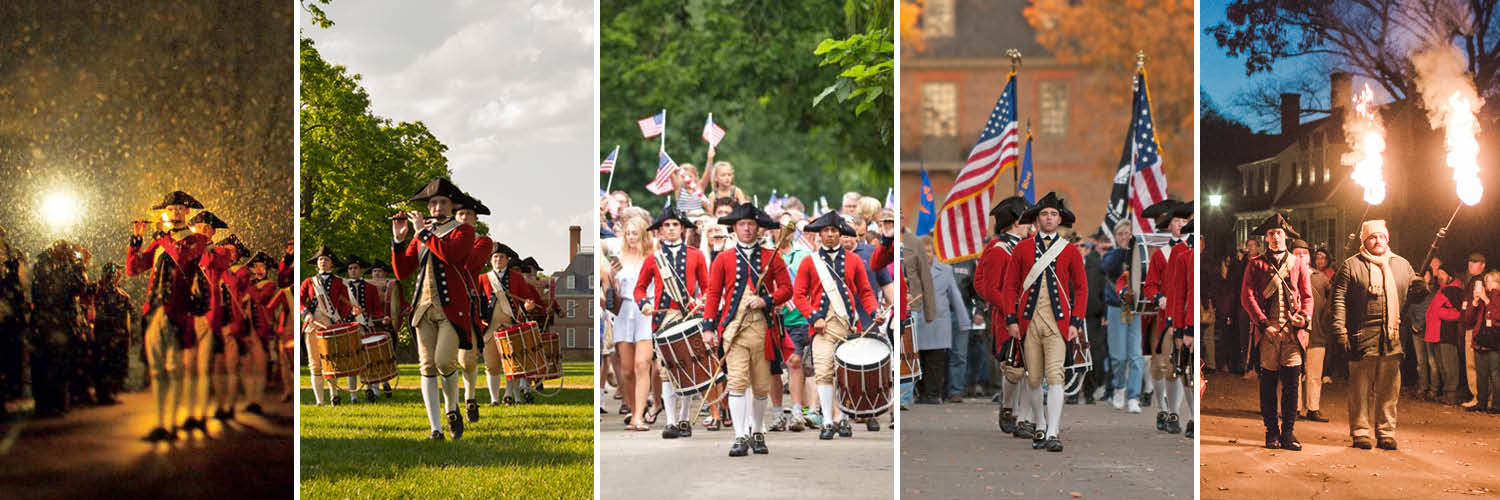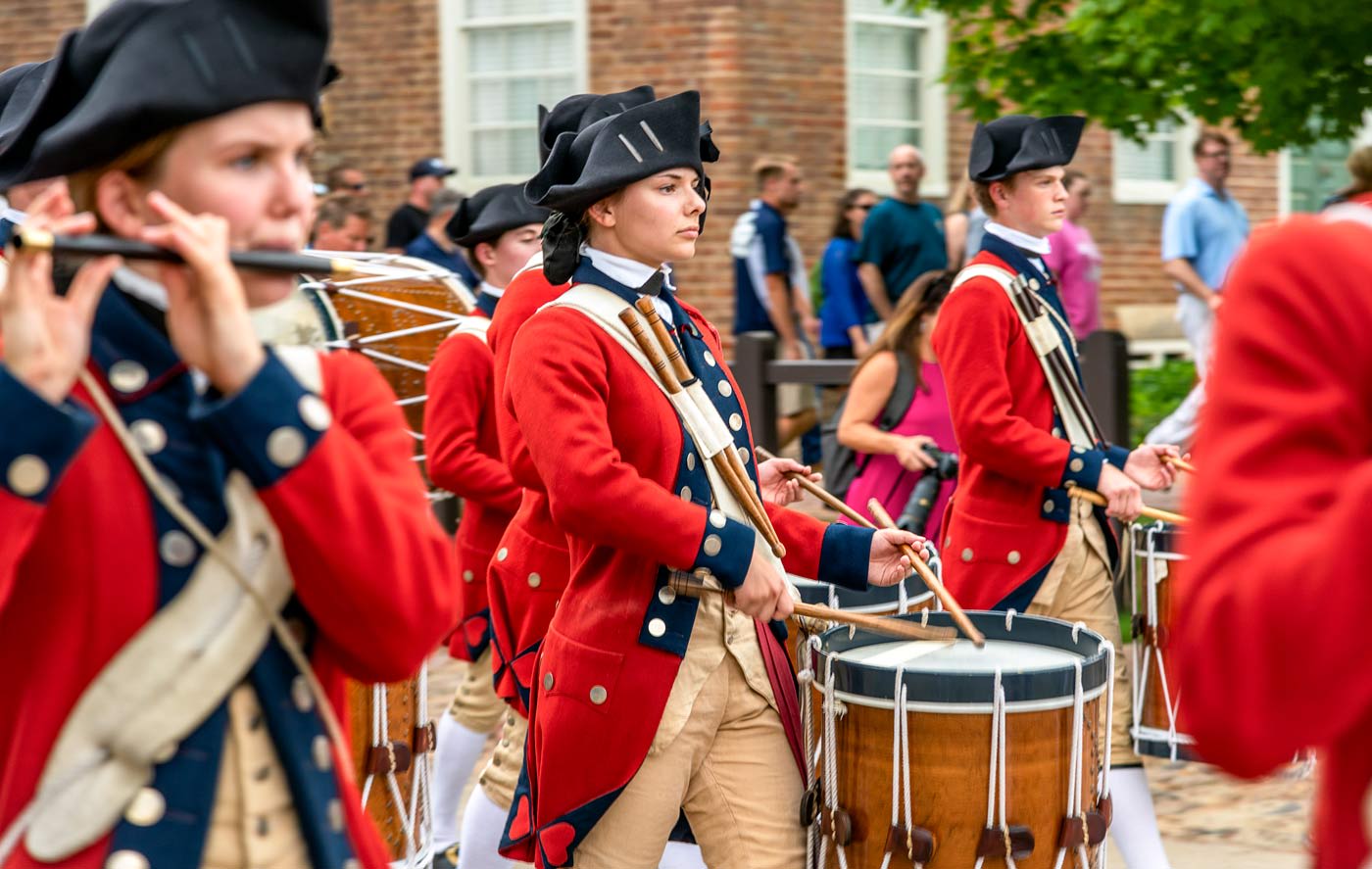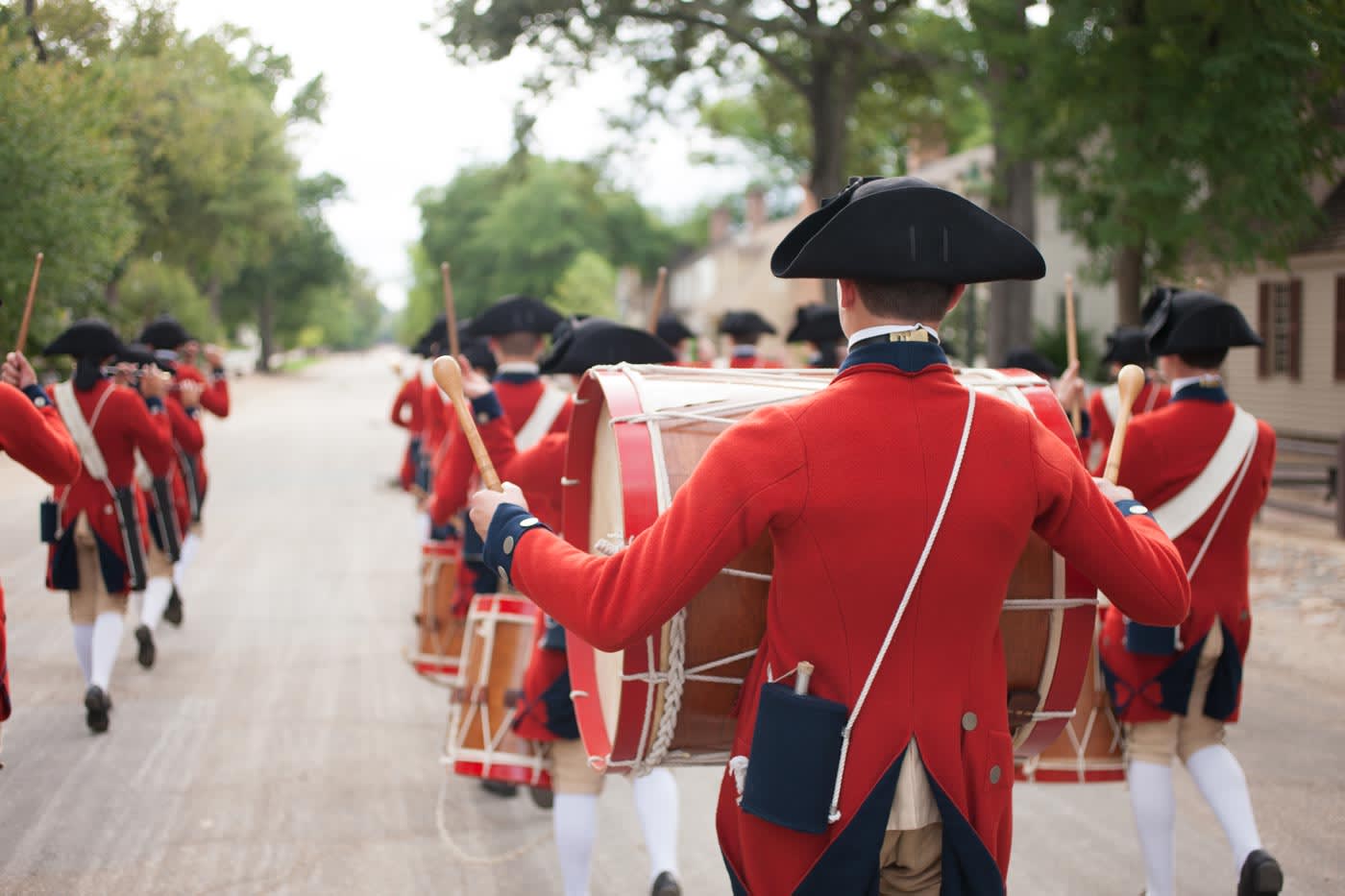
The Sound of History
The march of the Fifes and Drums is an indispensable part of the Colonial Williamsburg visit. The shrill fife and the resounding drum broadcast a wave of sound throughout the Historic Area, announcing the red-and-blue-uniformed regiment moving through the streets of Williamsburg.
Standing along Duke of Gloucester Street as the Fifes and Drums march by, today’s guests experience exactly what the soldiers of the 18th century felt as the vibrations of sound resonate not just in their ears, but through their whole bodies.

A Musical Military
It’s no mistake that the sound of the Fifes and Drums stops everyone in their tracks: stately chamber music, this was not. In the 18th century, military field music acted as a melodic communication system that ordered the soldiers’ day and sent vital communications through the chaos of battle. A single fifer and drummer could be heard from nearly a mile off.
During the American Revolution, one fifer and one drummer were deployed as a regular component of a company of 75 officers and men. Two boys, generally aged between 10 and 18, marched along with each company. Their uniform’s inverted colors designated them as non-combatant members of the troops. These standard conventions were customary for both English and American forces.

Order in Camp, Order in Battle
When encamped, music known as “duty calls” marked the rhythms of the day. The reveille “First Camp” awoke soldiers in the morning. “The Roast Beef of Old England” announced mealtime. A retreat ceremony, often at sunset, ended the soldier’s working day with a tune like “Liberty.” The last song in the soldier’s ear was a tune called a “tattoo,” named for the act of “turning the taps to,” meaning that tavern keepers would tighten the taps on their barrels of ale for the night and shoo drinkers home. Today, this ceremony is known as “Taps.”
On the battlefield, the Fifes and Drums were crucial communication. Before radios, phones, or drones, the unique frequencies of the fife and drum were chosen for their ability to carry over long distances and cut through the fury of combat.
“To Arms” was a general alarm, used when the army was surprised. The musical signal “Cease Fire” was a tune both sides would recognize, no doubt with some relief. Similarly, “Parley” was a request to pause the action, primarily to discuss capitulation or remove wounded from the battlefield. “Retreat” was a song that needed no explanation.
A Tradition Preserved
Since 1958, Colonial Williamsburg has sustained this long history. One notable concession to modern times is the admission of young ladies as well as young men to the ranks. A pool of local applicants of youth aged 9-10 provides a rich community connection to this echo of living history.
In all other ways, the instruction, practice, and music performed are painstakingly faithful to the original. Older students help to instruct newer students as they advance through the eight-year program.
Period-accurate uniforms are authentically detailed to the last stitch, with every button and pocket added only after research confirms it belongs there.
Listening to the Fifes and Drums is one of the few experiences that time cannot alter. The frequencies – both high and low – have the power to send a shiver down the spine and an echo through the core as we witness this slice of our military and musical heritage.
